Oxford holds a special place in my heart. I read Theology at Mansfield College 1994 – 1997, so I spent formative years cycling around the streets, spending my student loan on books from Blackwells, rowing on the river, and studying in the Radcliffe Camera library.

Oxford is a key location in the ARKANE series. Home to Morgan Sierra, it provides a point of stability in her hectic life of international travel and defeating the bad guys! With its own ARKANE field office, Oxford also sees the start of Morgan’s life as an agent in Stone of Fire. You could say it's the intellectual balance for her supernatural adventures.
So Oxford has links with the occult through ARKANE, but what other weird tales lurk in the city of dreaming spires? Let’s take a walk around some of the historical and occult aspects of Oxford.
Oxford as the capital of England?
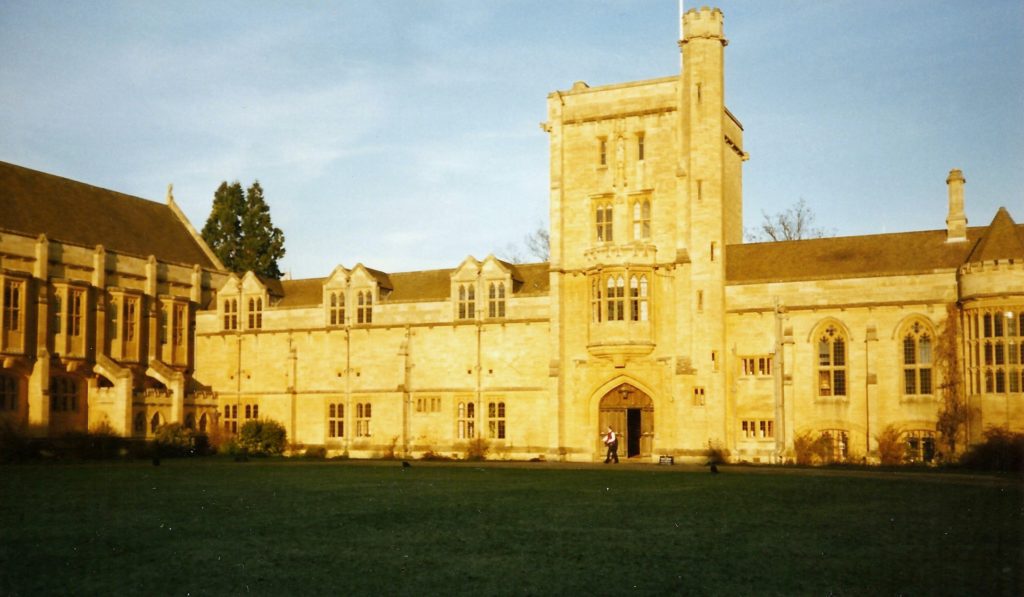
Oxford was briefly the capital of England during the English Civil War. The town supported the Parliamentarians, but the University supported the monarchy. King Charles I moved his court here in 1642 and he stayed at Christ Church College until 1646.
Local legends claim the tragic king still haunts the college, both with and without his head. Civil War ghosts also appear elsewhere in Oxford. A bedroom at Merton College was so haunted that no one could spend an entire night there. The library at the college is reportedly haunted by a former Royalist colonel, shot after surrendering to Parliamentarian forces in 1645.
There’s even a legend that Hitler intended to use Oxford as his capital if he invaded England so deliberately avoided bombing it. There’s no evidence to support the theory, but it certainly fits in with the occult leanings of the city. (Morgan comes up against the occult side of Nazi history in Gates of Hell.)
Divine power supported the founding of Oxford University
An interesting legend surrounds the founding of the university. A princess named Frideswide wanted to dedicate herself to the Church, but the king of Mercia wanted to marry her, so Frideswide fled to Oxford to escape him.
When the king entered the city in hot pursuit, a divine power struck him blind. His sight only returned when he begged forgiveness and released Frideswide from her betrothal. The king left empty-handed and Frideswide founded a nunnery. According to the legend, the first colleges were built for monastic scholars.
Despite the legend, women were only admitted in 1878. The university awarded degrees to women in 1920. The last all-male college opened to women in 1974.

What would the old male founders of the colleges make of Morgan Sierra's Krav Maga skills?
Learning and knowledge
Oxford is most famous as a seat of learning. Evidence suggests the university has operated since 1096 AD and only the University of Bologna has been in operation for longer.
My Theology degree included some of the oldest subjects studied including the New Testament in ancient Greek, Israel before the Exile and Patristics, the study of the early church fathers. These papers shaped a number of my ARKANE books, and I spent much of my study time in the Radcliffe Camera, part of the Bodleian Library.
It is second only to British Library in terms of its holdings and the Bodleian stocks over 11 million items across several sites. It even extends into underground stacks, which I visited once, and became the inspiration for the underground ARKANE headquarters. A tunnel connects the Weston Library, the Old Bodleian and the Radcliffe Camera.
The famous Ashmolean Museum first opened to the public in 1683, the first museum in the world to be accessible to the public. It's one of the best things to see in Oxford, and it hosts an enviable collection of art and archaeology from around the world. Its Egyptian collection is one of the largest outside Cairo. Visitors can even write to the Ashmolean a week in advance to request access to the original drawings of Raphael and Michelangelo.
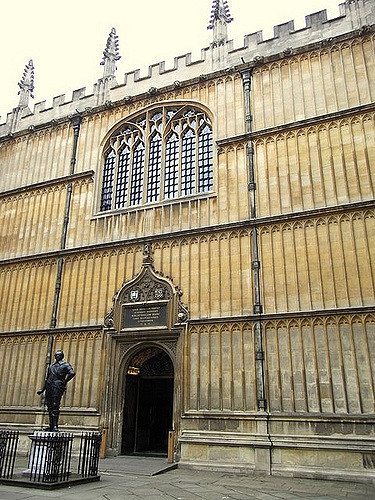
The Ashmolean is a perfect hiding place for one of the Seals of Revelation needed to resurrect the Great Serpent at the End of Days.
Elsewhere in Oxford, the Pitt Rivers Museum holds an amazing collection of archaeological and ethnographic objects from around the world. Founded in 1884, the museum has over half a million items. In my books, it’s also the public face of the Oxford branch of the ARKANE Institute, which nestles below the museum.
Most museums arrange their objects by geography or culture, but the Pitt Rivers Museum creates displays using types of object. That way, visitors can see how a range of cultures across a range of time periods have approached textiles, weapons, and even musical instruments.
Who knows what fascinating relics might lie among their Japanese Noh masks and Tahitian mourner's costumes?
Underground Oxford

As well as the tunnels beneath the Bodleian Library, there's also a Norman crypt beneath St. Peter-in-the-East, now the college library of St. Edmund (Teddy) Hall. According to rumours, the crypt hides the entrance to a tunnel network that was used until the 1960s.
There are also legends about an underground passage that led into the crypt. King Henry II apparently used the tunnel when he visited Oxford. He passed through the tunnel to avoid his Queen while seeing his mistress. Sadly, no evidence has been found … yet.
Another series of underground tunnels connected the homes in the Oxford Jewish quarter. They lurk behind a medieval doorway below Oxford Town Hall.
Wells and gardens

Wells and spas provide handy clues to the pagan roots of old English towns, including Oxford. The wells mark the sites of springs, often worshipped by earlier inhabitants for their magical properties. The town of Bath, where I live now, is a famous example.
St Margaret's Well lies in Binsey, 1.5 miles north-west of Oxford. Dedicated to Frideswide, its legend claims her prayers brought forth a healing spring when the king of Mercia was struck blind. The well became a site of pilgrimage during medieval times. Cured cripples would leave their crutches to adorn the nearby church when they left.
Pilgrims visited for its power in curing eye complaints and infertility and Katherine of Aragon, first wife of Henry VIII, was even rumoured to pay the well a visit. Legend has it that Lewis Carroll based the treacle well in Alice in Wonderland on St Margaret's Well. It’s one of the more peaceful things to see in Oxford and some still believe in the curative properties of the water.
Oxford also boasts the oldest Botanic Garden in the world. Founded as a physic garden in 1621, the Botanic Garden was always intended as a learning resource. Nowadays the Garden works within plant conservation, as well as conducting research at Oxford University.
Oxford and strange fiction
Oxford is important to my ARKANE books, but it also has (more famous!) literary links, particularly with fantasy fiction. Charles Dodgson (Lewis Carroll) taught at Christ Church College. He was friends with the Dean and immortalised his daughter in fiction as Alice in Wonderland.
Writer Kenneth Grahame attended St Edward's School in Oxford. He's buried in the city’s Holywell Cemetery. Perhaps his time in Oxford inspired the otherworldly atmosphere of The Wind in the Willows.
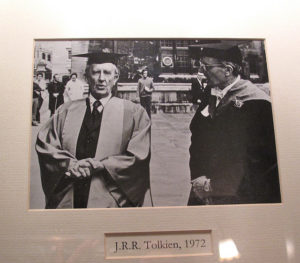
The Great Hall at Christ Church inspired the dining hall of Hogwarts, while the staircase leading to the hall appears in the Harry Potter films. The locations around the college are some of the more popular things to see in Oxford.
Given that Oxford has the highest number of published writers per square mile, maybe there's something in the air that seeps into fiction.
Charles Williams must have thought so. He was part of the Inklings, a group of Oxford writers that also included J. R. R. Tolkien and C. S. Lewis. Williams wrote poetry about the Arthurian legends and supernatural novels about the spiritual realm breaking into daily reality.
He was also a member of The Fellowship of the Rosy Cross, a secret Rosicrucian fraternity. Arthur Edward Waite founded the group in 1915 and blended spiritual esotericism and Christianity. Unlike the Hermetic Order of the Golden Dawn, the FRC rejected magic. A lot of its members were Freemasons and they sought knowledge more than power.
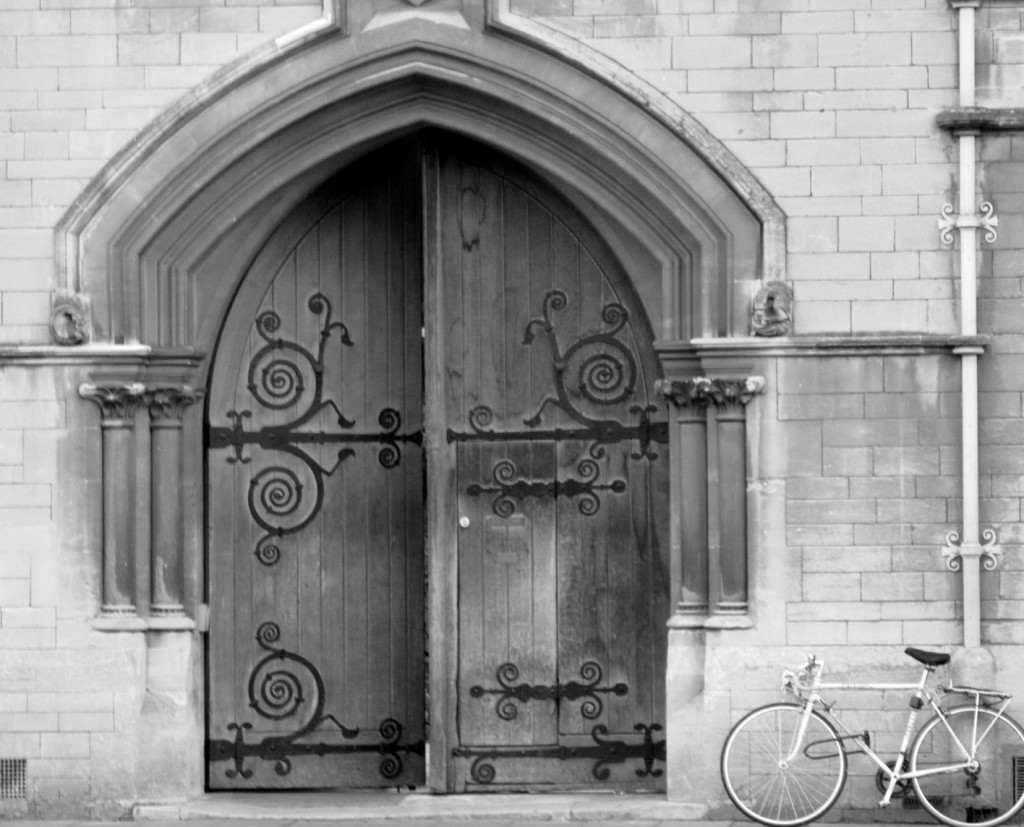
The occult in Oxford
Charles Williams couldn’t have picked a better city if he wanted to explore the occult. There's something about the city that inspires the spirit. The word ‘occult’ means ‘knowledge of the hidden,’ so what better place than this seat of learning for occult traditions?
Students have dabbled in the occult across the centuries. Adam Squier, a Master of Balliol College in the 16th century, was almost expelled after he sold demons to help his clients win at gambling. The famous Tudor magician, John Dee, thought highly of another student, Thomas Heth.
In recent years, the Hermetic Order of the Golden Dawn inspired the founding of the Oxford Golden Dawn Occult Society (OGDOS). It's a magical order that teaches a more modern form of magic than the older Golden Dawn system.
The OGDOS are working to re-establish a resource centre in Oxford. They want to provide a space for ritual gatherings. Its founder, Mogg Morgan, is the CEO of the Mandrake of Oxford publishing press, specialising in occult titles. Elsewhere in the city, the Inner Bookshop on Magdalen Road carries occult books.
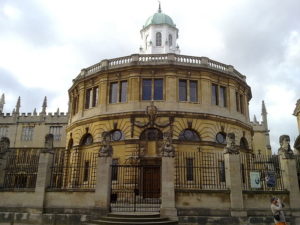
Part of the northern end of All Souls College was re-designed by Nicholas Hawksmoor, 18th-century architect and Freemason. A series of architectural conspiracy theories surround his London churches and his work often includes obelisks, pyramids and other elements hinting at pagan influences at odds with ecclesiastical buildings.
While they can’t be attributed to Hawksmoor, many of the college buildings are also home to a host of gargoyles. Some are just faces and others are whole people. The comedy grotesques are some of the more unusual things to see in Oxford.
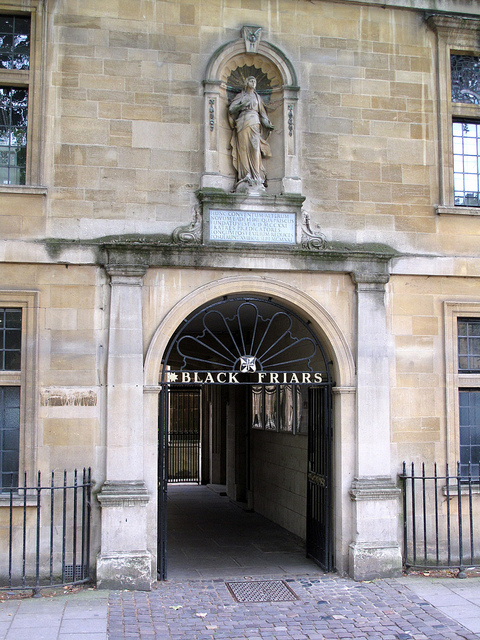
Elsewhere in the city stands Sir Christopher Wren’s first major commission – the magnificent Sheldonian Theatre. Like his apprentice Hawksmoor, Wren was a Freemason. He used the traditions of the Kabbalah and sacred geometry from the Old Testament in his work. Perhaps the journey of Wren and Hawksmoor into the occult began in Oxford.
Morgan Sierra investigates the Freemasons' Grand Lodge of England in the hunt for the Ark of the Covenant in Ark of Blood.
You can plot your own plan of esoteric things to see in Oxford
Try following in Morgan’s footsteps and start with the museums. Explore some of the nooks and crannies of the colleges for a small fee. Seek out ancient springs or keep your eyes open for hidden entrances to secret tunnels.
Keep an open mind while you wander. Who knows where those winding alleyways may take you?
Begin your journey into Oxford’s ARKANE side with Stone of Fire, or binge the whole series in ebook, print or audiobook.

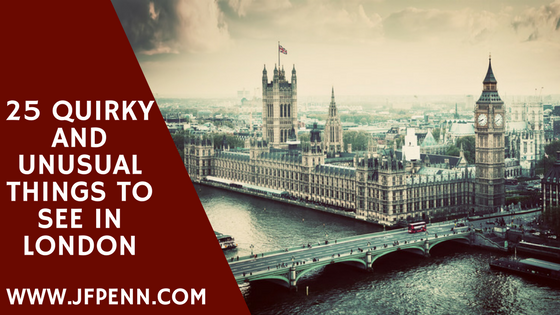
 This grisly museum hides inside the Royal College of Surgeons in Lincoln’s Inn Fields. It houses a range of medical specimens, anatomical anomalies and vicious instruments. Free to visit, it’s a quirky collection that’s not for the faint-hearted. It’s also the perfect place for a murder scene, as Detective Jamie Brooke discovers in
This grisly museum hides inside the Royal College of Surgeons in Lincoln’s Inn Fields. It houses a range of medical specimens, anatomical anomalies and vicious instruments. Free to visit, it’s a quirky collection that’s not for the faint-hearted. It’s also the perfect place for a murder scene, as Detective Jamie Brooke discovers in 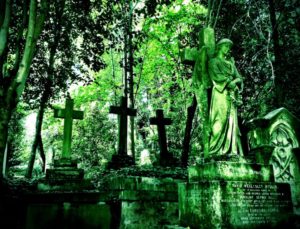
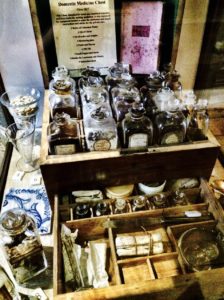
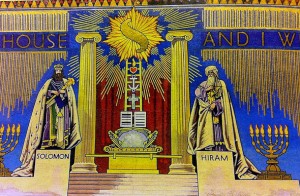

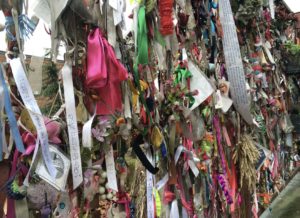
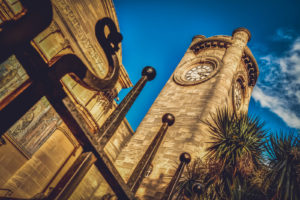


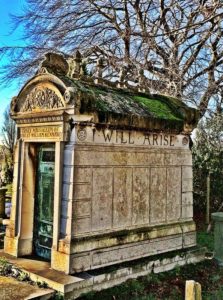


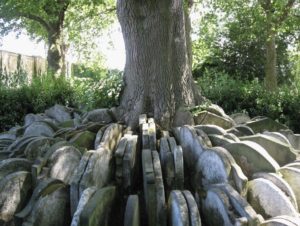
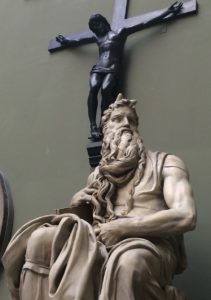 (24) The Sculpture Gallery at the V&A
(24) The Sculpture Gallery at the V&A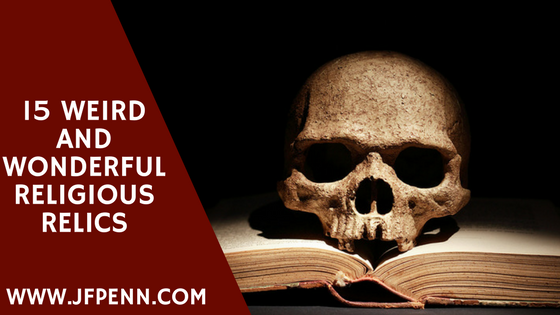 Relics are sometimes used to give to weight to political posturing and they’re sometimes pressed into service for more nefarious reasons … So maybe, just maybe, they hold a lot of their own power too.
Relics are sometimes used to give to weight to political posturing and they’re sometimes pressed into service for more nefarious reasons … So maybe, just maybe, they hold a lot of their own power too.
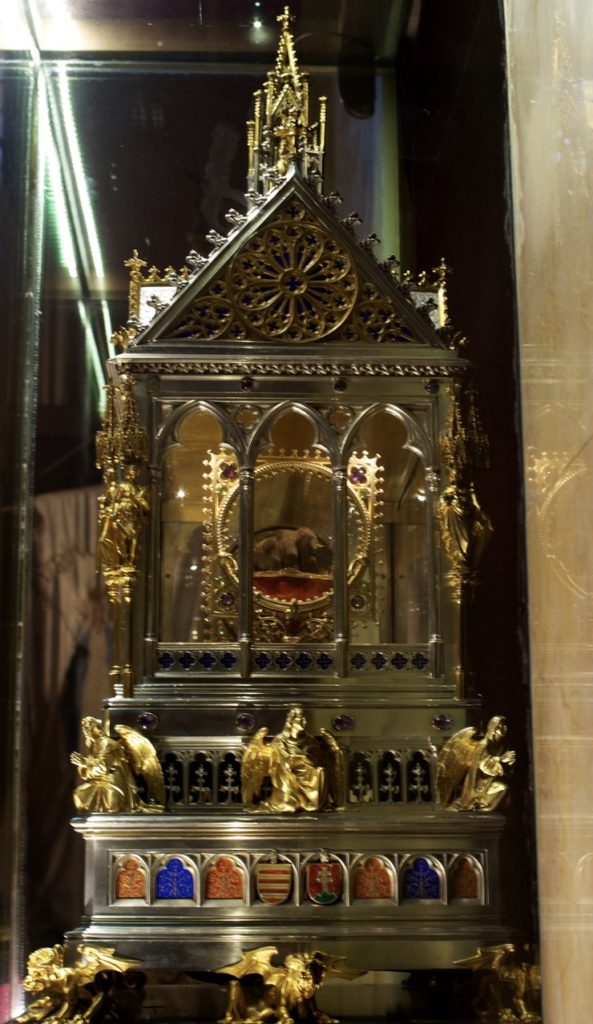
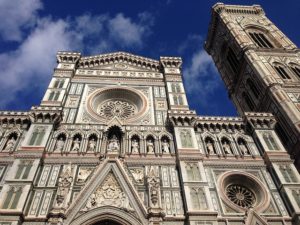
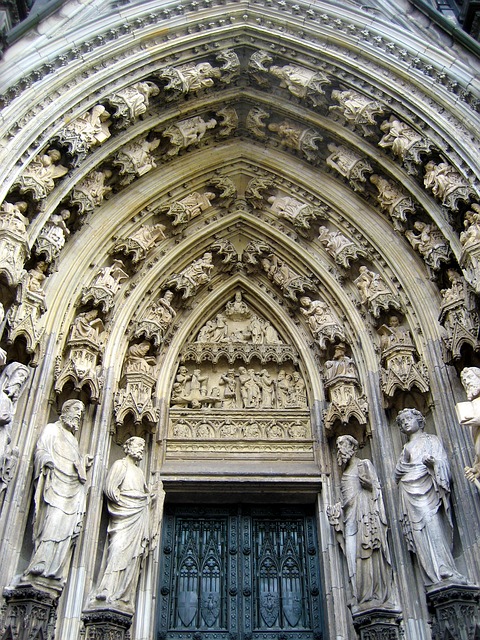
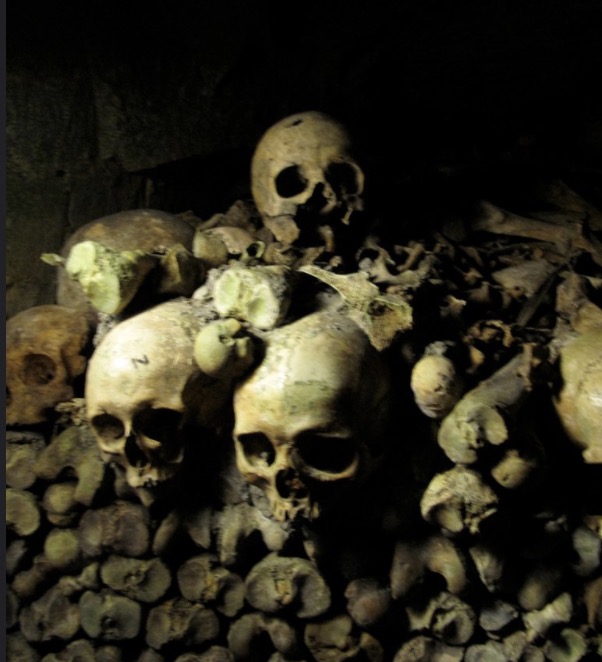 St Camillus started out life as a soldier and a gambler. He later repented and devoted his life to caring for the sick. After being denied entry to the Capuchin order thanks to a leg injury, he established the Order of Clerics Regular, Ministers to the Sick. They specialised in assisting injured soldiers on the battlefield. A large red cross was a symbol of the Order – centuries before the Red Cross was formed.
St Camillus started out life as a soldier and a gambler. He later repented and devoted his life to caring for the sick. After being denied entry to the Capuchin order thanks to a leg injury, he established the Order of Clerics Regular, Ministers to the Sick. They specialised in assisting injured soldiers on the battlefield. A large red cross was a symbol of the Order – centuries before the Red Cross was formed.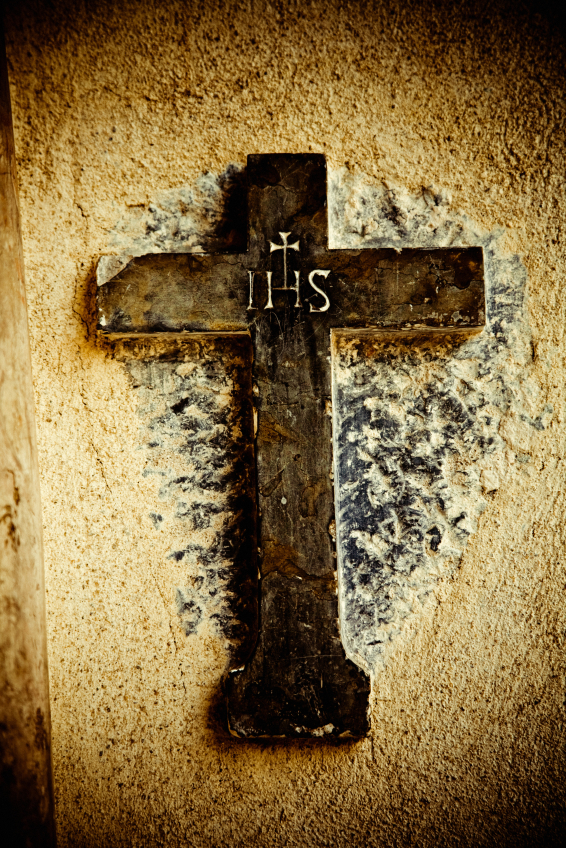 15. The Tongue and Jaw of St Anthony, Padua
15. The Tongue and Jaw of St Anthony, Padua